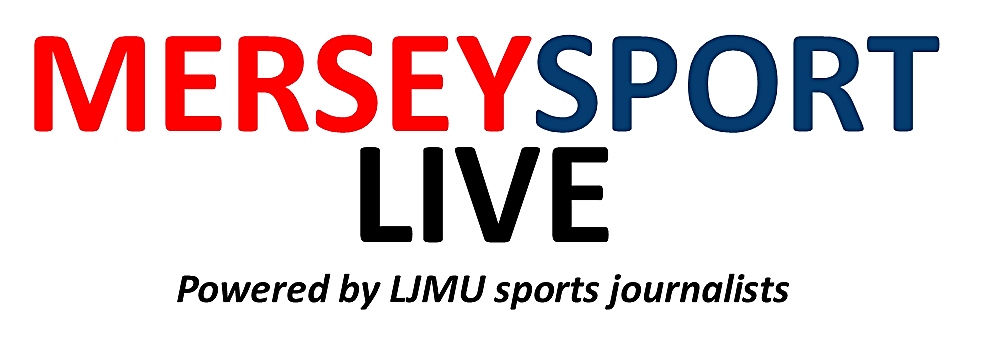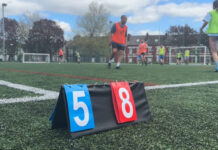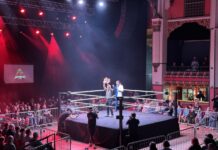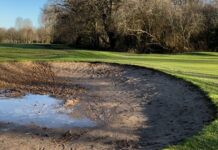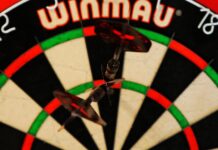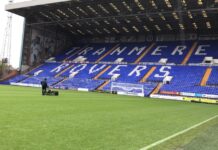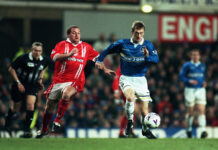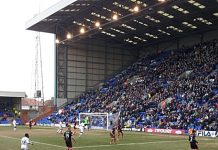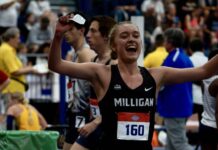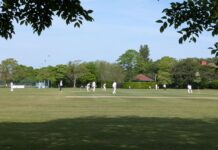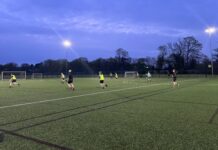Once home to the British and European Grand Prix in the 1950s, the roar of F1 returned to Aintree Club Circuit at the first of three annual track days.
Held by Liverpool Motor Club, the track days are non-competitive events allowing drivers to test both their skills and the performance of their cars, divided into four groups ranging from novices to pure racing cars and single-seaters.
Driven by Dr Ian Rowlance, head of engineering company 6R4, one single-seater that certainly wowed the Aintree crowd was the 1985/86 Haas Lola F1 car, hitting the track for the first time in 40 years.
“It’s a lifetime achievement really,” Ian said.
“A genuine Grand Prix car on a genuine Grand Prix circuit which was used for the British Grand Prix, it’s been a real thrill.”
The car at Aintree originally raced in the 1985 F1 Championship with a 750 BHP turbocharged Hart 415T four-cylinder engine but has since been fitted with the beefier engine from the following season.
After failing to arrive in 1985 due to a four-month loss in design and development time, Ford Motor Company powered the team in 1986 with their 900 BHP TEC V6 turbo engine – the most powerful engine the American manufacturer ever produced in Formula 1.
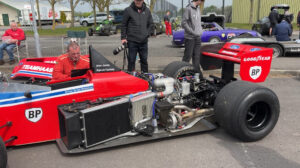
While running on the day was limited to just solo test runs, Ian still offered insight into what it is like to drive an F1 car of yesteryear in comparison with the more technically advanced machines of today.
“The mid-80s was the most powerful, probably most dangerous era of Formula 1,” he said.
“It’s not like today with driver aids, where they’ve got launch control, traction control, auto clutch – this is all mechanical, you’ve got to drive it.”
The Haas Lola F1 team
Before Gene Haas, owner of today’s Haas F1 Team, there was Carl Haas – the founder of the unrelated Haas Lola team that made its debut in 1985.
Much like his namesake, Haas had an impressive record of success in motorsport, particularly in American series CART and IndyCar, before entering the grandest competition of them all.
In 1984, Haas gained sponsorship from major American food company, Beatrice Foods, for his IndyCar team – co-owned by Hollywood star Paul Newman – with the conglomerate also funding a move into F1 the following year as part of the deal.
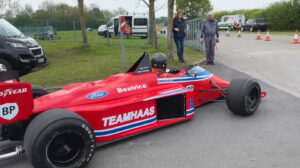
The new team was certainly not short of ambition, chasing to no avail legendary designer Gordon Murray, and world champions Nelson Piquet and Keke Rosberg, according to Motorsport News’ Graham Keilloh.
Even still, Haas recruited renowned figures in Neil Oatley and Ross Brawn from 1980 and 1981 Constructors’ champions Williams – the pair separately went on to win multiple Drivers’ and Constructors’ titles at teams such as McLaren, Ferrari and Brawn GP.
The driver line-up was equally impressive, coming out of retirement in 1985 to join his former Williams colleagues was Alan Jones, the last Australian to win a drivers’ title in 1980.
After completing just four races in 1985, French racer and two-time Grand Prix winner Patrick Tambay would later join Jones for the American outfit’s first, and only, full season in 1986.
No doubt Haas’ best day came at the 1986 Austrian Grand Prix, when mechanical problems for the front runners helped see Jones and Tambay finish P4 and P5, respectively, the only double points finish in the team’s brief history.
Despite all the credentials packed into the team, such success was few and far between, the team’s time in F1 ended in 1987 after Beatrice withdrew funding – forcing the Haas out of the sport with just six Championship points to their name.
F1 in the 1980s
While short-lived, Haas Lola’s stint in F1 nonetheless came in the middle of what was a golden era for the sport.
In 1985 alone, the F1 grid consisted of both current and eventual world champions in Alain Prost, Aryton Senna, Niki Lauda, Nelson Piquet, Keke Rosberg, as well as Jones, Piquet and Rosberg.
The decade was also defined by the fierce, personal intra-team rivalries between Senna and Prost at McLaren, and Mansell and Piquet at Williams – both teams fighting at the front of a highly competitive grid with the likes of Brabham, Ferrari, and Lotus.
The history of Aintree
Rich in history is the Aintree Motor Racing Circuit itself.
Located within the Grand National Course five miles north of Liverpool, the original three-mile Grand Prix circuit – constructed in only four months in 1954 – held the British Grand Prix from 1955 to 1962.
Until 1982, car racing continued on what is the current 1.5-mile circuit, where enthusiasts can take part in sprint events and the three annual track days – the second of which is scheduled for Saturday, June 28.
Among the five world championship Grand Prix held at the original circuit, the very first stands out as the most iconic, and is still spoken about today.
On July 16, 1955, two of the greatest F1 drivers in history – the London-born Sir Stirling Moss and eventual five-time world champion, Juan Manuel Fangio from Argentina – battled for the lead in their Mercedes W196s for three gruelling hours in the Merseyside sun.
The Guardian reported that ‘both drove unerringly’ for a crowd of almost 150,000, with elder statesman Fangio the more controlled of the two:
“When Moss was in the lead Fangio never harried him, but when Fangio was leading Moss followed so closely that he was being sucked along in Fangio’s slip-stream and the notes of their engines rose and fell in unison.”
In the end, it was Moss that took the victory – his first in F1, and remarkably, the first of any British driver in the history of the British Grand Prix.
With only 0.2s separating two rivals understood to have had a vey strong relationship, a debate over whether Fangio, ever a class act, slowed down to let Moss win has never fully been resolved.
Regardless, it was the first of 16 Grand Prix wins for Sir Stirling, widely regarded as the greatest F1 driver to never win a world championship, before a career-ending accident at Goodwood in 1962.
Another first at Aintree in 1955 was for Australian driver Jack Brabham, making his debut in a career that saw him win three Drivers’ titles – one of them for his own team in 1966, a feat achieved by nobody else in the sport’s history.
The Aussie went on to win at Aintree in 1959, as did the legendary two-time champion Jim Clark for Lotus at the circuit’s final F1 race in 1962
F1 winners at the British Grand Prix 1955-1962
| Year | Winner | Team | – Fastest lap/ Driver |
| 1955 | Stirling Moss 🇬🇧 | Mercedes 🇩🇪 | 2:00.400/Stirling Moss 🇬🇧 |
| 1957 | Tony Brooks 🇬🇧
Stirling Moss 🇬🇧 |
Vanwall 🇬🇧 | 1:59.200/Stirling Moss 🇬🇧 |
| 1959 | Jack Brabham 🇦🇺 | Cooper-Climax🇬🇧 | 1:57.000/Stirling Moss 🇬🇧 |
| 1961 | Wolfgang von Trips 🇩🇪 | Ferrari 🇮🇹 | 1:57.800/Tony Brooks 🇬🇧 |
| 1962 | Jim Clark 🇬🇧 | Lotus-Climax 🇬🇧 | 1:55.000/Jim Clark 🇬🇧 |
Data from Pitwall Formula 1 database
Featured image courtesy of Henry Eccles.
